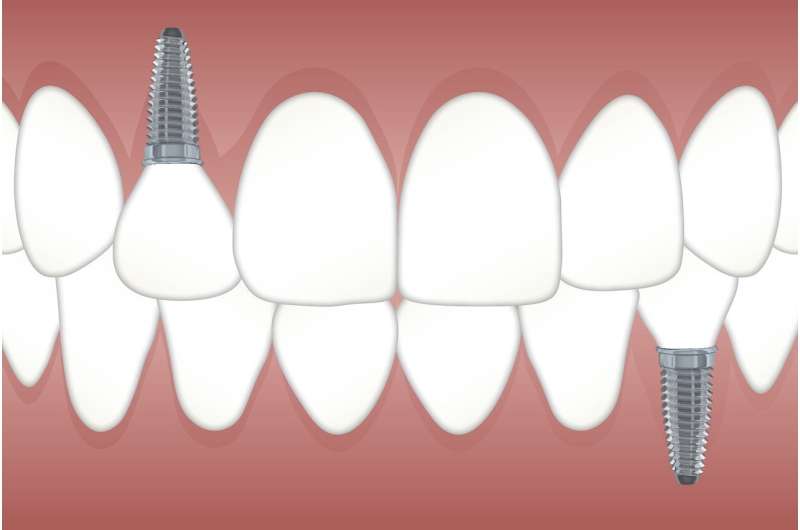

When dental implants are inserted, saliva or blood plasma immediately coat them. The implants adsorb a thin layer of proteins from these fluids that help gum tissue attach, but also allow microorganisms—including potentially harmful bacteria—to grow on the implant surface.
The surface of implants, as well as other medical devices, plays a significant role in the adsorption of oral proteins and the colonization by unwanted microorganisms (a process known as biofouling), according to a new study led by the University at Buffalo and the University of Regensburg.
The research, published in the Journal of Dental Research, sought to increase scientists’ understanding of this complex biological process by examining the makeup of the oral protein layer and how it can be controlled by chemically modifying the biomaterial surface. The findings lay the groundwork for improving the success of medical and dental implants, says co-lead investigator Stefan Ruhl, DDS, Ph.D., professor of oral biology in the UB School of Dental Medicine.
“It is often this protein layer, rather than the biomaterial surface, that is encountered by colonizing bacteria or attaching tissue cells. These proteins help determine the biological or pathological consequences that result in either long-term survival of the implant or its failure along with irreversible damage to the surrounding tissues from infection,” says Ruhl. “Therefore, it is important to determine how adsorption might be controlled through chemical modification of the biomaterial surface to achieve a desired outcome.”
The study was also co-led by Rainer Müller, Ph.D., professor at the Institute of Physical and Theoretical Chemistry at the University of Regensburg.
Using silica beads designed in Müller’s lab with various chemically modified surfaces, the researchers found that the adsorption of proteins from blood plasma is more influenced by the amount of protein adsorbed than by the composition of the protein layer.
However, the adsorption of proteins from saliva was directly impacted by the biomaterial’s surface. Adsorption was lower on surfaces that had a negative electric charge or that repelled water, countering the findings of previous studies.
When examining complex biofluids such as saliva and blood, adsorption became unpredictable for the majority of proteins, says Ruhl.
“The interaction between the proteins contained in the biofluids may play an important, but still little understood, role in adsorption processes,” says Müller. “The ultimate goal to connect surface properties to protein adsorption so that optimal tissue compatibility will be achieved but microbial adhesion will be prevented, will likely not be as straightforward as expected.”
The model system of chemically modified silica surfaces developed by the researchers may serve as a platform to study the basic principles of protein adsorption from complex biofluids.
Source: Read Full Article